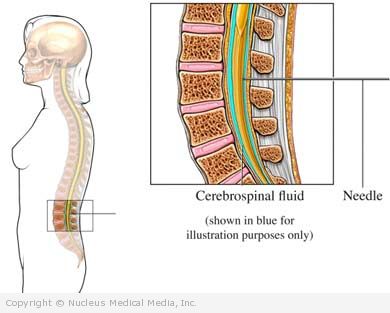Reye’s syndrome
Reye’s syndrome – Definition
Reye’s syndrome is a serious disorder that causes increased pressure in the brain and build-up of fat in the liver and other organs. It affects all organs of the body, but is most harmful to the brain and liver. Reye’s syndrome occurs primarily in children, most often during recovery from a viral infection.
Reye’s syndrome – Causes
The cause of Reye’s syndrome is unknown. However, studies have found a link with the use of aspirin and other salicylates during a viral illness.
Reye’s syndrome – Risk Factors
A risk factor is something that increases your chance of getting a disease or condition. Your risk of Reye’s syndrome increases with:
- Age: 2 to 16 years old
- Recent viral illness, including:
- Upper respiratory infection
- Influenza (the flu)
- Chickenpox
- Use of aspirin or other salicylates
Reye’s syndrome – Symptoms
Symptoms usually occur after a viral illness, and are divided into five stages:
Stage 1:
- Frequent or persistent vomiting
- Drowsiness and fatigue
- Laboratory evidence of liver dysfunction
Stage 2:
Personality changes, such as irritability and aggression
- Confusion
- Disordered speech
- Hallucinations
- Deep lethargy
- Hyperventilation
Stages 3 to 5:
- Coma
- Seizures
- Inability to breathe without help
Brain swelling and other problems in Reye’s syndrome progress very quickly. They may result in permanent neurologic damage or death. Call a doctor immediately if you think your child has Reye’s syndrome.
Reye’s syndrome – Diagnosis
The doctor will ask about symptoms and medical history, and perform a physical exam. Tests may include:
- Liver function tests — these include:
- SGOT (AST)
- SGPT (ALT)
- LDH
- Ammonia
- Prothrombin time
- Spinal tap (lumbar puncture) — insertion of a needle between the lumbar vertebrae in the back to remove spinal fluid for testing
- Liver biopsy — removal of a sample of liver tissue for testing
Note that certain inherited metabolic disorders can present with signs and symptoms that mimic Reye’s syndrome. Some have specific treatments, and all may recurr — sometimes fatally — unless diagnosed appropriately. Tests for these disorders (such as ornithine transcarbamylase syndrome) should be done in all children with Reye’s syndrome.
Reye’s syndrome – Treatment
Early diagnosis and treatment are essential for a successful recovery.
Treatment may include:
Medication
- Medications include:
- Corticosteroids
- Diuretics
- Glucose
- Insulin
- Barbiturates
- Specific treatments to reduce blood ammonia levels
- Sodium phenylacetate and sodium benzoate
- Dialysis
- Ondansetron (Zofran) for severe vomiting
Arterial Catheter
If symptoms affect the brain, an arterial catheter may be inserted to monitor the pressure, carbon dioxide, and oxygen content of blood.
Pressure Monitoring
In stage 3 to 5 Reye’s syndrome, a “bolt” or other device may be used to monitor pressure within the brain.
Ventilator
In advanced stages, a ventilator may be used to assist with breathing.
Surgery
A drainage procedure or decompression craniotomy may occasionally be needed to reduce pressure in the brain.
Reye’s syndrome – Prevention
To prevent Reye’s syndrome:
- Aspirin is not recommended for children and teens with a current or recent viral infection. Check with your doctor before giving aspirin to a child or teen. Widespread decline in the use of aspirin for children is one reason why the incidence of Reye’s syndrome has decreased dramatically in recent years.
- Avoid giving children and teens medications that contain salicylates. Examples include Alka-Seltzer, Anacin, Bufferin, and Pepto-Bismol.

